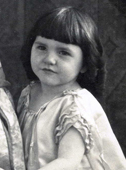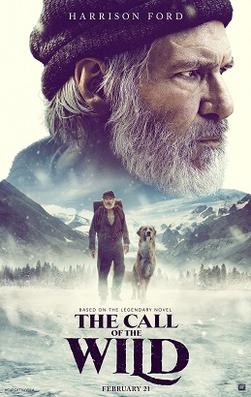
Of Mice and Men is a 1939 American drama film based on the 1937 play of the same name, which itself was based on the novella of the same name by author John Steinbeck. The film stars Burgess Meredith, Betty Field, and Lon Chaney Jr., and features Charles Bickford, Roman Bohnen, Bob Steele, and Noah Beery Jr. The film tells the story of two men, George and his intellectually disabled partner Lennie, trying to survive during the dustbowl of the 1930s and pursuing a dream of owning their own ranch instead of always working for others. Starring in the lead roles were relative Hollywood newcomer Burgess Meredith as George and veteran actor Lon Chaney Jr. as Lennie. Chaney had appeared in more than 50 films by that point in his career, but Of Mice and Men was his first major role. Betty Field's role as Mae was her breakthrough role in film.

Charles Joseph Parrott, known professionally as Charley Chase, was an American comedian, actor, screenwriter and film director. He worked for many pioneering comedy studios but is chiefly associated with producer Hal Roach. Chase was the elder brother of comedian/director James Parrott.

The Call of the Wild is a short adventure novel by Jack London, published in 1903 and set in Yukon, Canada, during the 1890s Klondike Gold Rush, when strong sled dogs were in high demand. The central character of the novel is a dog named Buck. The story opens at a ranch in Santa Clara Valley, California, when Buck is stolen from his home and sold into service as a sled dog in Alaska. He becomes progressively more primitive and wild in the harsh environment, where he is forced to fight to survive and dominate other dogs. By the end, he sheds the veneer of civilization, and relies on primordial instinct and learned experience to emerge as a leader in the wild.

The St. Bernard or Saint Bernard is a breed of very large working dog from the Western Alps in Italy and Switzerland. They were originally bred for rescue work by the hospice of the Great St Bernard Pass on the Italian-Swiss border. The hospice, built by and named after the Alpine monk Saint Bernard of Menthon, acquired its first dogs between 1660 and 1670. The breed has become famous through tales of Alpine rescues, as well as for its large size, and gentle temperament.

Pups Is Pups is a two-reel comedy short subject, part of the Our Gang series. It was produced and directed by Robert F. McGowan for Hal Roach, and originally released to theatres by M-G-M in 1930. It was the 100th Our Gang short that was released and the first in the 1930-1931 season.

Our Gang is an American series of comedy short films chronicling a group of poor neighborhood children and their adventures. Created by film producer Hal Roach, also the producer of the Laurel and Hardy films, Our Gang shorts were produced from 1922 to 1944, spanning the silent film and early sound film periods of American cinema. Our Gang is noted for showing children behaving in a relatively natural way; Roach and original director Robert F. McGowan worked to film the unaffected, raw nuances apparent in regular children, rather than have them imitate adult acting styles. The series also broke new ground by portraying white and black children interacting as equals during the Jim Crow era of racial segregation in the United States.

Our Hospitality is a 1923 American silent comedy film directed by Buster Keaton and John G. Blystone. Starring Keaton, Joe Roberts, and Natalie Talmadge and distributed by Metro Pictures Corporation, it uses slapstick and situational comedy to tell the story of Willie McKay, caught in the middle of the infamous "Canfield–McKay" feud, an obvious satire of the real-life Hatfield–McCoy feud.
Kenneth D. Peach, Sr. was an American cinematographer.

Dr. Jack is a 1922 American silent comedy film starring Harold Lloyd. It was produced by Hal Roach and directed by Fred Newmeyer. The story was by Jean Havez, Hal Roach, and Sam Taylor. The film was released on November 26, 1922.

Suzanna is a 1923 American silent comedy-drama film starring Mabel Normand and directed F. Richard Jones. The picture was produced by Mack Sennett, who also adapted the screenplay from a story by Linton Wells. A partial copy of the film, which is missing two reels, is in a European archive.

The Big Show is the ninth Our Gang short subject comedy released. The Our Gang series was created by Hal Roach in 1922, and continued production until 1944.
Fred Wood Jackman Sr., was an American cinematographer and film director of the silent era. He worked on 58 films as a cinematographer between 1916 and 1925. He also directed eleven films between 1919 and 1927, including two film serials for Hal Roach Studios.

Peggy Lenore Ahearn Blaylock, known professionally as Peggy Ahern, was an American actress best known for her appearance in eight of the Our Gang series of films released between 1924 and 1927. The Our Gang series, which was also known as The Little Rascals or Hal Roach's Rascals, was a series of comedic, short silent films created by director and producer Hal Roach. Ahern was one of the last surviving cast members from a Hal Roach film.

Lassie Lou Ahern was an American actress. Originally discovered by Will Rogers, she was best known for her role as Little Harry in the 1927 silent film Uncle Tom's Cabin and also for her recurring appearances in the Our Gang films. Except for "Baby Peggy", Ahern was the last living performer who had a substantial career during Hollywood's silent era.
Richard Fryer, born Morris Kolsky, was a British-born Hollywood cinematographer.

The King of the Wild Horses is a 1924 American silent Western film directed by Fred Jackman. It stars Edna Murphy, Rex the wonder horse, and Charley Chase. It was written and produced by Hal Roach and released through Pathé Exchange.

The Call of the Wild is a 2020 American adventure film based on Jack London's 1903 novel of the same name. Directed by Chris Sanders, in his live-action directorial debut, and his first film without a co-director, the film was written by Michael Green, and stars Harrison Ford, Omar Sy, Cara Gee, Dan Stevens, Karen Gillan, and Bradley Whitford. Set during the 1890s Klondike Gold Rush, the film follows a dog named Buck as he is stolen from his home in California and sent to the Yukon, where he befriends an old outdoorsman and begins a life-altering adventure.

John Arnold (1889–1964) was an American cinematographer. He began his career in 1914, and in the next 15 years, he shot 86 films. He also worked in film administration, directing the cinematography department at MGM, and was president of the American Society of Cinematographers from 1931 through 1937, and again from 1939 to 1941. By 1938, he was regarded as one of the most authoritative experts on cinematography. He invented several pieces of camera equipment and was awarded two Oscars, both Technical Achievement Awards. The first was in 1938 for improvements on the semi-automatic follow focus device used on motion picture cameras, while the second was in 1940 for the development of the MGM mobile camera crane.
Walter Lundin was an American cinematographer who worked extensively in Hollywood during the silent era and had a career through the 1950s.

Thunder the Dog was a male German Shepherd that performed in American silent films from 1923 through 1927. Although Thunder's filmography is rather brief, his six- and seven-reel features were much longer and more elaborate than the films in which many of his fellow canine actors appeared during the silent era. His releases did, though, have to compete in the 1920s with other feature films starring rival German Shepherds such as Peter the Great, Napoleon, Rex, and, most notably, Strongheart and Rin Tin Tin. During his career, Thunder worked for Paramount, Gotham Pictures, and Fox Film Corporation; and he shared screen time with Clara Bow, Dorothy Dalton, William Russell, Caryl Lincoln, and other prominent actors of the period.



















